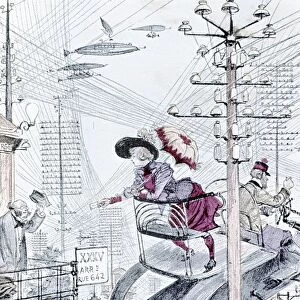Home > Europe > Related Images
Typical enlarged spleen of a Malaria patient. Malaria is caused by a parasitic protozoa
![]()

Wall Art and Photo Gifts from Universal Images Group (UIG)
Typical enlarged spleen of a Malaria patient. Malaria is caused by a parasitic protozoa
Typical enlarged spleen of a Malaria patient. Malaria is caused by a parasitic protozoa transmitted by the Anopheles mosquito, Until the 1930s the only effective treatment was the drug Quinine, an alkaloid obtained from the bark of the Cinchona tree, native of South America. Also called Peruvian bark for its country of origin, or Jesuits bark as it was brought to Europe by Spanish missionary priests. Les Grands Maux et les Grands Remedes (The Principal Illnesses and Their Remedies), Jules Rengade, (Paris, c1890)
Universal Images Group (UIG) manages distribution for many leading specialist agencies worldwide
Media ID 9767019
© Universal History Archive/Universal Images Group
1930s America Bark Brought C1890 Caused Country Drug Enlarged Jesuits Jules Malaria Medicine Missionary Mosquito Native Obtained Origin Parasitic Paris Patient Peruvian Priests Principal Remedies South Spanish Treatment Typical Alkaloid Anopheles Cinchona Effective Grands Illnesses Protozoa Quinine Rengade Spleen Transmitted
FEATURES IN THESE COLLECTIONS
> Europe
> Related Images
> South America
> Related Images
> Universal Images Group (UIG)
> History
> Paris
EDITORS COMMENTS
This print showcases the typical enlarged spleen of a Malaria patient, shedding light on the devastating effects of this infectious disease. Malaria is caused by a parasitic protozoa that is transmitted through the bite of an Anopheles mosquito. Until the 1930s, when medical advancements revolutionized treatment options, the only effective remedy for this ailment was Quinine. This drug, derived from the bark of the Cinchona tree native to South America, played a crucial role in combating Malaria. The image also offers historical significance as it comes from Les Grands Maux et les Grands Remedes (The Principal Illnesses and Their Remedies), a publication by Jules Rengade dating back to around 1890. The book explores various diseases and their corresponding treatments during that era. Interestingly, Quinine was commonly referred to as Peruvian bark due to its origin in South America or Jesuits bark because Spanish missionary priests introduced it to Europe. Its discovery and subsequent use marked a significant milestone in medicine's battle against Malaria. As we observe this photograph, we are reminded of both humanity's triumphs over infectious diseases and our continuous efforts to develop more advanced remedies for global health challenges like Malaria.
MADE IN THE USA
Safe Shipping with 30 Day Money Back Guarantee
FREE PERSONALISATION*
We are proud to offer a range of customisation features including Personalised Captions, Color Filters and Picture Zoom Tools
SECURE PAYMENTS
We happily accept a wide range of payment options so you can pay for the things you need in the way that is most convenient for you
* Options may vary by product and licensing agreement. Zoomed Pictures can be adjusted in the Cart.





